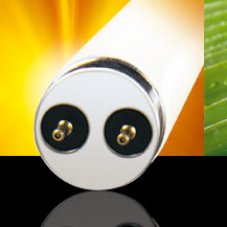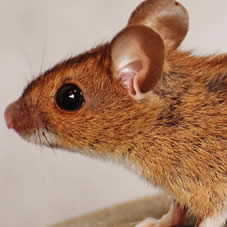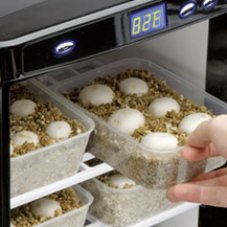Free Delivery
On order over £99*
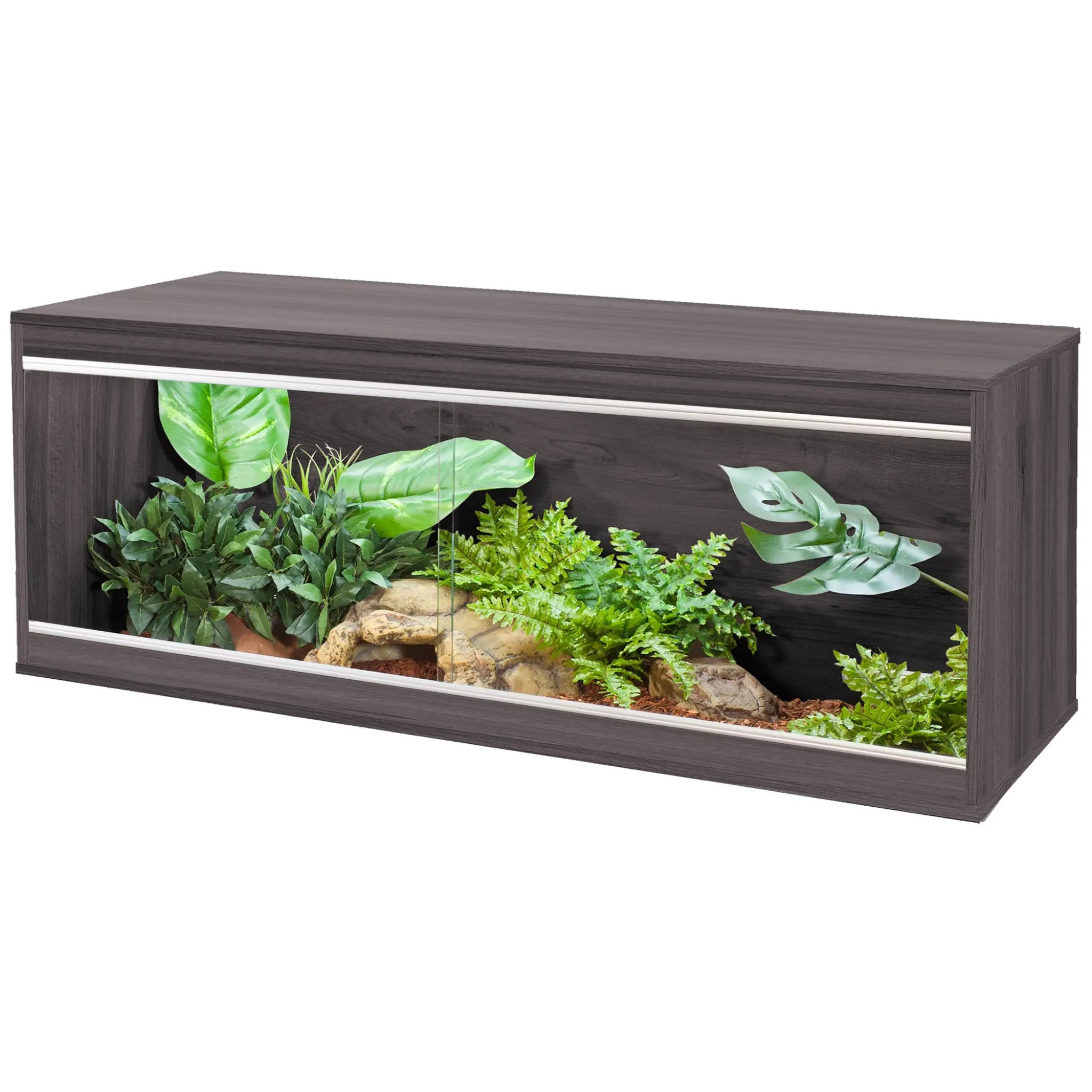


Scientific Name:Python sebae

Potential Adult Size: 300-500cm (118-196 inches)

Average Life Span: 20+ years

Dietary Requirements: Carnivorous

Other Names: Central African rock python

African rock pythons are a massive species of snake found in sub-Saharan Africa. These snakes can frequently reach up to 5m in length and individuals have been found as long as 6 or 7m. Males of the species are typically smaller than females. African rock pythons are the largest species of snake found in Africa and one of the largest species of snake worldwide.
African rock pythons are normally black, brown and muddy green colours with a mottled dark patterns running down the length of its spine. They can be found in a variety of environments from forests to deserts and will hunt most animals all the way up to small antelope and crocodiles.


African rock pythons do best with a large terrestrial vivarium for their enclosure. This is because wood is an excellent insulator of heat and so a wooden vivarium will make it easier to control the crucial temperatures required inside the habitat. The wooden vivarium should have good ventilation to allow good air flow in and out of the enclosure.
As a juvenile the python will thrive in enclosures 4ft in length and 2ft in depth and hieght. As the python grows it will need to be upgraded to a much bigger enclosure. A male may be okay in something around 7 x 3 x 2ft but females could need something even bigger.
Naturally, African rock pythons would be experiencing temperatures of around 31℃ (88℉) in the sun. We try to provide this heat over 1/3 of the enclosure while letting the rest of the enclosure cool to 29℃ (85℉) on the opposite side. Due to the size of enclosure required the cool side may go all the way down to room temperature which is still fine as long as most of the enclosure is warm. To achieve this we attach a ceramic heat lamp to the ceiling of the enclosure on one side. In larger enclosures, two ceramic heaters may be required in tandem, spaced out on the hot side. This is controlled by a pulse thermostat to make sure that the temperature is kept correct throughout the day. African rock pythons will be able to reach the top of their enclosure without decorations to climb on so the ceramic lamp must be surrounded by a guard. As they do not produce any light, ceramic lamps can be left on day and night. To provide lighting for the enclosure we recommend using an appropriate strength UVB tube that runs 2/3 of the width of the enclosure.
At night, all of the lights should go off and the enclosure should be completely dark. This should make sure that the snake has a clear day night cycle.
Though the thermostats we sell are very reliable it is always best practice to monitor your temperatures with a thermometer. A small variance on the basking spot is nothing to worry about as long as your cool side is still cool. A simple dial thermometer on each side should be sufficient but digital probe thermometers are much more accurate.
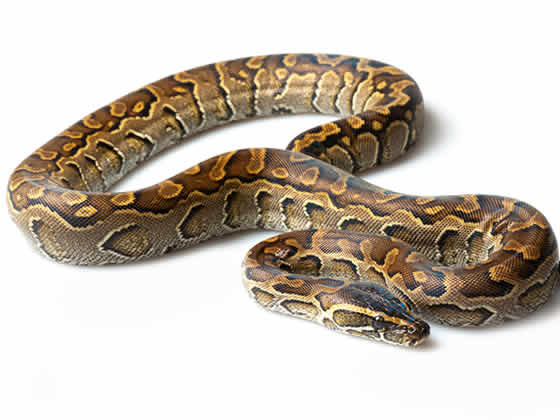
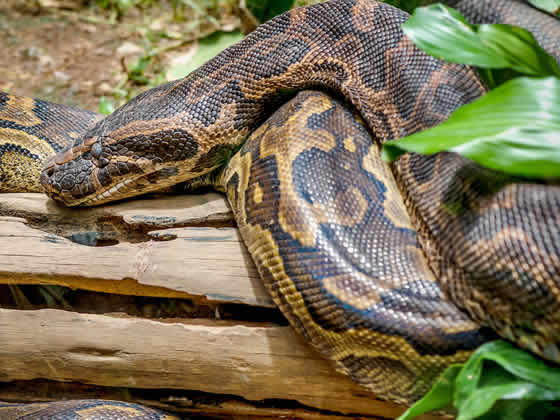
African rock pythons do not require UVB to use the calcium in their diet like other reptiles but it is still a beneficial addition to the enclosure. The snake would naturally be exposed to UV from sunlight in the wild and as we are trying to emulate nature in our enclosures we recommend providing some UVB.
To aid in deciding which intensity UVB is required for each species, UVI readings have been taken in their natural habitat. These readings are compiled over time to get an average exposure reading which sits in one of 4 distinct ranges called Ferguson zones. Zone 1 animals get very little UVB exposure, Ferguson Zone 2 consists of partial baskers, zone 3 are basking reptiles and zone 4 animals bask in UVB intense environments. African Rock Pythons are recorded as basking in Ferguson zone 2 (UVI 0.7-1).
In the same way we allow a little variance in the temperature of the basking spot we would not worry too much if the UV exposure is a little too strong at the closest point. As long as there is a gradient present the python will place itself in the perfect position.
UV tubes are currently available in 2 sizes, T8 and T5. The T8 lamps are around 1 inch in diameter, they must be replaced every 6 months or so and they have an effective range of 9-12 inches. T5 lamps are the newer iteration. They are around half an inch in diameter, they must be replaced every 12 months and have an effective range of 18-24 inches.
If the enclosure is 2ft tall as recommended we would advise using a T5 unit and for this species a Zone 2 or 5% UVB tube. When mounted around 30cm from the main basking spot these UVB tubes should provide the correct basking zone. The UVB unit should be mounted to the ceiling close to the back wall. This configuration will provide a nice UV gradient from the back of the enclosure towards the front and from the top of the enclosure to the bottom. With the UV and basking lamp set up this way we achieve a temperature gradient along the width of the enclosure and a UV gradient along the depth of the enclosure. This means that whatever the pythons requirements they can find the perfect position within the enclosure.
Though the python will be active in the day time it may desire some time during the day in an area with little to no light. To allow this we advise providing partial and full hiding spots throughout the enclosure.
African rock pythons thrive in a mid to low humidity environment with hard decorations to climb over. When selecting a bedding we try to ensure that the pieces are unlikely to increase the enclosures humidity too much. In store we normally use a coarse beech woodchip or coarse bark woodchip as they are clean, cheap, easy to spot clean and dust free. If you prefer a more natural looking decoration a soil / leaf mix would be perfect. If you plan to keep the snake in a bio-active enclosure a nutrient rich soil and clay mix with some moss for moisture retention would be perfect. These snakes require areas of high humidity when coming up to a shed. Rather than make the entire enclosure humid we recommend providing a fully enclosed cave or tub with an entrance large enough for the snake to get in and out of easily. Within this hide you can add wet moss to keep the humidity high.
African rock pythons love the warmth coming from their ceramic lamp but they also appreciate secondary belly heat which will radiate from warm objects. Natural rocks like slate are perfect for this, so are heavy artificial ornaments. These decorations can be placed under and around the basking area and should warm up nicely. If the lamp is too low there is a chance that natural rocks could get too hot so you are best to check the surface temperature to avoid burns.
As discussed in the lighting section there will be times when the snake does not want any UV and needs a bit of shade. To ensure that the snake can get away from the light whenever necessary we advise spreading full and partial cover throughout the enclosure. Examples of full cover decorations would be caves, flat cork pieces or any other ornament that provides a shady spot to rest. Examples of partial cover would include tall plants, trailing plants.
African rock pythons are carnivorous and should be fed frozen thawed foods. Though they are opportunists and might eat a variety of animals in the wild we have found that mice are the best diet for a juvenile African rock python in captivity. As it grows, the mice will become too small and will be substituted with rats. Eventually rats will also be too small and rabbits or other mammals will be required. Whatever is being fed, make sure that only 1 item is offered at a time and at least 1-2 weeks is left between feedings.
More exotic alternative diets like gerbils, hamsters, multimammate mice or chicks could be used if the python won't take anything else but they aren't as nutritious as the mice, it can be difficult to find them in the size required and they aren't always as available.
We always include a large sized water bowl in the snake's enclosure. You might notice the snake use it for bathing, this is usually to cool down or to help loosen its shedding skin. Both the water bowl should be kept on the cool side of the enclosure to prevent it from raising the humidity in the enclosure.
If you keep a male and female together, they may breed. You do not need to do anything to encourage this. As long as they are healthy and the conditions are good, it will happen naturally. You need to consider whether you want this to happen before introducing the pair. What will you do with the babies if you incubate the eggs?
A gravid female should have access to a nesting box to lay her eggs. The box should be large enough that she can fully turn-around inside it. Inside the nesting box we use a soil mix that is kept humid enough to hold its shape but not so wet that it will saturate any eggs. We have found that ProRep spider life is perfect for this.
Once laid, the eggs should be incubated in an incubator at 31℃ (88℉). We incubate our eggs in sealed boxes on a moisture rich substrate (such as Hatchrite) to trap the humidity around the eggs. After approximately 60-80 days the eggs will start to hatch, the first babies to emerge will encourage the rest of the eggs to hatch.
African rock pythons, as with most pets, require a clean environment to thrive. We recommend a spot clean as often as possible (every day) and a full clean every 4 weeks or so. If you are keeping the snake in a bio-active enclosure you can spot clean and monitor the enclosure. It may still be a good idea to change out the bedding a few times per year.
When cleaning the enclosure you should remove your animal, all decorations and all of the bedding. Once the enclosure is clear you can spray it all over with a reptile friendly disinfectant. These usually work very quickly and only need to be left for around 30 seconds, instructions can normally be found on the disinfectants packaging. Once the disinfectant has done its work it can be wiped away from the surfaces with a paper towel. In some cases you might want to repeat this process a second time to ensure that the enclosure is thoroughly cleaned.
Your decorations can be cleaned in a similar method, simply spray them down with the disinfectant and rinse thoroughly with water before drying them off and putting them back into the enclosure. We recommend this process is done during the day time to make sure that the snake will be going back to a warm vivarium for at least an hour before the basking lamps are turned off for the night.
Sign up to the Reptile Centre newsletter so you don't miss out on all the latest offers and guides to give your pet the best they deserve





